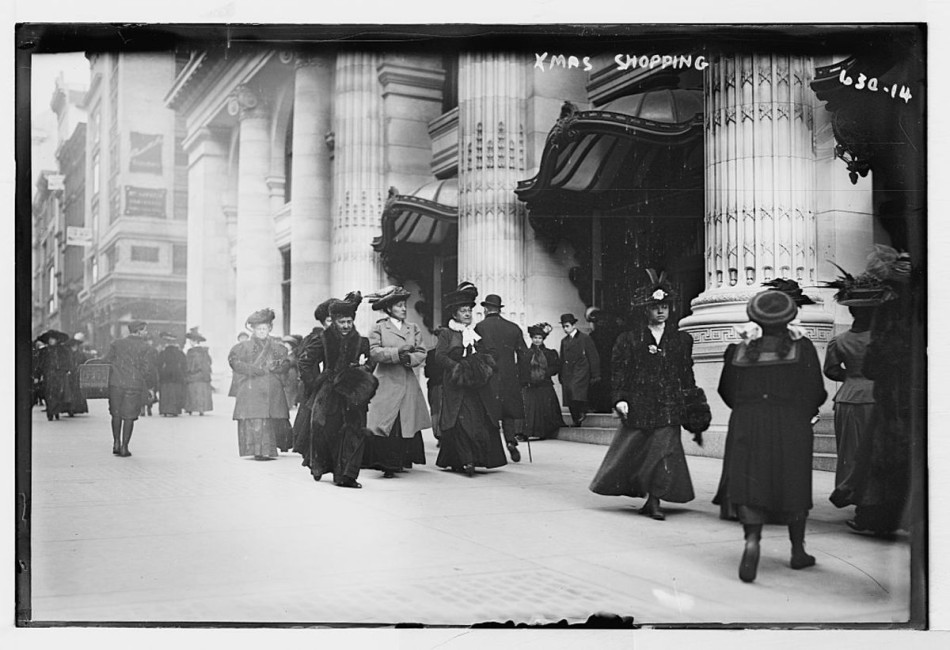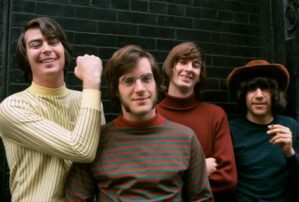The Christmas season is a retailer’s mother lode.
From as soon as October, Americans hit the stores or visit online shops to purchase presents to trade with friends and family for Hanukkah, Ramadan, Christmas – whichever event they’re celebrating.
The Christmas season, normally characterized as November to December, is the season when Americans spend the most, basically on presents for their most treasured, and retailers gain the most. Last year, spending over the Christmas season came to a great USD $626.1 billion, up 3% from 2014, and, as per the NRF, occasion deals can now add to a retailer’s yearly income by as much as 30%.
We went as far as possible back to the appearance of winter gift-providing for figure out how seasonal shopping has advanced after some time into the business peculiarity that it is today.
Late Relic: the appearance of occasion gift-giving
We want to turn back the clock to before the Medieval times to track down the beginnings of celebrating winter celebrations and gift-giving. The time of Late Vestige (between the second and eighth hundreds of years Promotion) – hundreds of years before America was first visited by the Europeans – marks the main known winter celebrations, and events to trade gifts with loved ones.
By then, agnostics in Europe and the Center East celebrated different winter celebrations like Saturnalia, a gather celebration that commended the arrival of the sun, and Yule. History lets us know that agnostics wanted to praise these joyful events with a beverage – or a few – and by trading gifts.
The seventeenth hundred years: occasion gifts for everybody
Quick forward so as to seventeenth century America. As of now, special festivals blast in notoriety, as did the demonstration of offering gifts. New Britain’s Puritan chiefs prohibited Christmas festivities in light of the fact that they were excessively extravagant of a training and there was not a glaringly obvious explanation for praising them. At the point when these festivals were at long last sanctioned during the 1680s, Americans went hard and fast, offering gifts to family, companions and neighbors.
Famous gifts during this period were high quality wooden toys and games. Grown-ups would trade elaborate embroidery pieces. every other person in the world would get something, from the least fortunate laborers to the Lord.
The nineteenth hundred years: the remaking of special times of year
The nineteenth century was a period of significant social change. A few huge verifiable occasions profoundly moved Americans’ way of behaving and led to the buyer and the commercialization of the colder time of year occasion celebrations.
Development of the occasion soul in writing
Numerous students of history perceive the impact that specific notorious works of writing had on molding special times of year as we probably are aware them today. Charles Dickens and his contemporary John Irving built a dream of special times of year as an opportunity to show empathy to other people and be liberal by offering gifts. These nostalgic depictions affected the manner in which Americans commended the colder time of year celebrations and led to a significant number of the qualities we partner with special times of year today.
The American Nationwide conflict (1861 to 1865)
Considered the most decimating occasion in American history, the American Nationwide conflict altogether affected American culture, strengthening the split between the North and South. With regards to a separated society, an ever increasing number of Americans started commending special times of year during and after the conflict, embracing the liberality of the occasion soul by giving, sharing and offering grace to other people. Only five years after the conflict was finished, December 25 turned into a public occasion. Special times of year were presently a cross country festivity.
The Modern Upset in the US (1820-1870)
The Modern Unrest changed how products were created. With new materials and machines, producers started making merchandise speedier, less expensive and in higher volumes than any time in recent memory. Fabricated gifts were presently reasonable to the working classes, at this point not simply the tip top.
In 1858, the primary retail chain in America, Macy’s, was established. Rapidly, Americans started purchasing produced presents generally from stores, instead of handcrafted gifts from neighborhood craftspeople.
In the late nineteenth hundred years, vendors started advertising merchandise for these special seasons: selling things, for example, enriching bubbly products imported from Germany and offering gift wrap administrations.
What Victorian’s purchased gigantically relied upon their group. Lower class society would usually trade a stocking containing products of the soil. Christmas cards were likewise a typical present among the more unfortunate class. They were cheap gifts which held wistful worth.
Before the Modern Upset, rich families would frequently have their gifts handcrafted by craftspeople. Normal gifts were high quality youngsters’ toys, etched from natural substances like wood. After the Modern Upset, center and privileged societies would buy efficiently manufactured presents produced using reasonable materials, for example, plant made toys (teddy bears, trains, dolls) and decorations.
The twentieth hundred years: occasion spending blasts
1900 – 1949
By the mid twentieth hundred years, the Christmas shopping season was solidly dug in Western culture. Customers would hit retail chains altogether, and shopper spending became one of the vitally monetary drivers in the US over the Christmas season.
In 1903, the Purchaser Class of New York sent off a cross country promoting effort to chop down the extended periods of time retail staff worked over the Christmas season. Magazines and papers approached purchasers to ambitious beginning their occasional shopping. Subsequently, buyer shopping conduct moved and the “Shop Early” mantra that would progress forward for a really long time – and is as yet present today – was conceived.
Makers and businesspeople did what they could to draw in the clamoring occasion group to their stores, offering an extensive variety of occasion themed merchandise. Concerning famous gifts right now, kids’ toys – outstandingly stuffed toys, dolls, train sets – were particularly well known, as were bubbly trimmings imported from Germany.
1950 – 1999
A rising number and assortment of stores started showing up during the mid twentieth hundred years. The principal enormous box store – Meijer Superstore – was established in Michigan in 1962. It sold a colossal scope of items, from toys to houseware. Customers had more decision than any other time in recent memory about where to purchase their vacation presents and what to purchase.
New innovation likewise enters the scene right now, changing the manner in which occasion gifts are showcased. Specifically, the TV enormously affected Americans’ gift decisions.
New materials, like plastics, additionally became promptly accessible. Makers could bring down creation cost significantly further and produce modest products in immense volumes. Occasion gifts were presently reasonable to by far most of Americans.
Famous occasion gifts during the twentieth 100 years
In the mid twentieth hundred years, famous gifts included production line created merchandise, like squishy toys and mechanical toys (think teddy bears and train sets). After the ’50s, Americans progressively purchased presents fabricated from plastics. Presently notorious toys like lego, Barbie and Mr Potato Head were well known. As we approached the finish of the twentieth hundred years, electronic buyer merchandise opened up, for example, the Nintendo Game Kid and the Tamagotchi – took off the racks.
21st hundred years: new innovation rethinks seasonal shopping
At the turn of the 21st hundred years, who might have anticipated the effect the web could have on our vacation shopping before long?
The 21st century plays seen the web’s part change seasonal shopping conduct. Amazon and eBay hit on the scene in 1995 and by the mid-2000s, more than 1 billion customers were shopping on the web.
Among 2005 and today, the web has become quicker and more available. 84% of American grown-ups now utilize the web. Buyers are not generally restricted by sluggish web associations. 8 out of 10 Americans presently examination and purchase occasion presents internet, utilizing an associated gadget (versatile, tablet, PC, and so forth.).
Lately, portable shopping through cell phone has entered the Christmas shopping blend. A record number of customers presently utilize their mobiles to research and purchase presents. Customers search out present purchasing counsel on their cell phones – they read web-based surveys, gift guides on YouTube and look for “the best” items in web crawlers, without being confined to a specific area.
The ascent of omnichannel
Today, clients shop web based (counting portable applications, virtual entertainment, online stores) and in-store conversely. In a new review on vacation retail deals, Deloitte gauges that 66% of clients currently research things online prior to getting them coming up. As well as exploring presents on the web, purchasers size them up available, purchase online for home conveyance or purchase online to get coming up. Deloitte additionally says that this year, without precedent for Christmas shopping history, customers intend to spend as much online as available. Current seasonal shopping is really an omnichannel undertaking.




